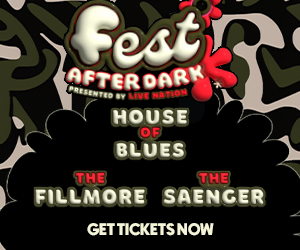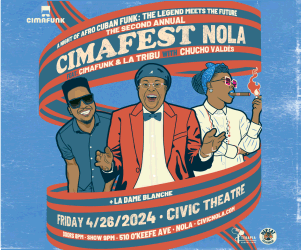 |
It would be hard to overstate the significance of Blue Crescent in the history of New Orleans music. At the moment when it appears that the last remaining treasures of the musical legacy left to this city by the inventors of jazz may have been utterly lost, Dr. Michael White has produced what must surely be one of the greatest examples of New Orleans traditional jazz ever recorded. Its genius lies in the fact that it is conceptually married to the form and style of the great early 20th Century New Orleans jazz musicians, yet it is a freshly imagined contemporary expression. Though White and his counterparts are playing traditional jazz, they are in the present moment artistically.
This music would be miraculous coming from any other corner, but it is a logical next step for White after 2004’s Dancing in the Sky, which reimagined this century-old tradition as the contemporary medium that allowed him to best express his sonic imagination. White came to his realization that this music was not simply an endless repetition of familiar tunes over a lifetime of study and performance that began with tutelage from original practitioners of the genre, in particular the late trumpeter Ernest “Doc” Paulin. On Dancing in the Sky, White found a meditative quality in this music that suited his deeply nuanced clarinet playing. But after losing all his wordly possessions when the London Avenue Canal burst and flooded his Gentilly home, White discovered even more in this music. On Blue Crescent, he expresses sorrow for what was lost, joy in being able to continue his work and the determination to pass the tradition on to future generations.
White is mindful of the symbolism in the title track. The color blue is meant to evoke the overwhelming sense of oppression inherent in the blues, but also peace and unity and, according to White’s notes, “optimism, opportunity, and new beginnings.” Similarly the crescent doesn’t stand merely for the city’s nickname, but also for the crescent moon, a symbol of transformation. White’s solemn, introspective solos on the title track are meant as “a metaphor for New Orleans as a wounded, but recovering city in transition.”
White underscores this purpose with an artful reconfiguring of the hoary standard “St Louis Blues,” delivered like a fresh coat of paint over a durable old house. The piece is carefully arranged to build to an early climax with Gregg Stafford’s trumpet solo. then gradually builds its ensemble strength as it moves through the changes. It’s a terrific example of how collective improvisation works at its best, with each instrument dancing in syncopated synchronization with all the rest.
One of the sly ways in which White updates the style without destroying it is to stick to its African diaspora roots, blending elements from other cultures as on “Crescent City Calypso,” “Ooh La La (Danse Creole)” and “Algeria,” which features North African melodies played a la Jelly Roll Morton. Elsewhere, White pays tribute to Paulin on “King of the Second Line” and emphasizes how important spirituals are to the tradition with his own arrangement of “Will the Circle Be Unbroken,” a version of the hymn “He Leads Me on This Journey” and a song based on the New Orleans church parade tradition, “Sunday Morning.”
The spirituals provide a way to draw attention to the thousands of Katrina-related funerals that New Orleanians are still dealing with. In part, this is how Katrina looms over the album without being its purported subject. In “London Canal Breakdown,” White’s music literally dances in the face of the tragedy as the sprightly breakdown becomes an ironic medium for a joyous 1920s-style stomp, which is certainly one way to deal with the disaster that destroyed your home.
All these conflicting emotions are perfectly balanced on White’s musical canvas, which makes the slow dirge “Katrina” even more powerful than it would have been on an album that only dwelt on the tragedy. The slow march of the snare drum played by the extraordinarily expressive Jason Marsalis sends chills up my spine as I listen to this full-blooded expression of the deepest sorrow these instruments can summon. Whether you hear it as a funeral for our family and friends or the promise of a new life for all, Blue Crescent is a major American work of art for the new millennium.




